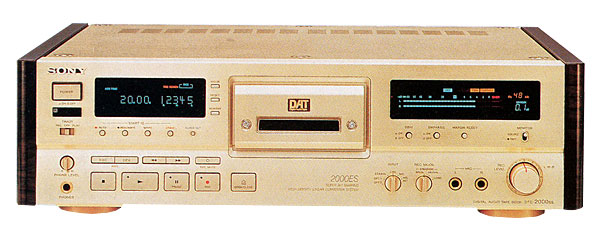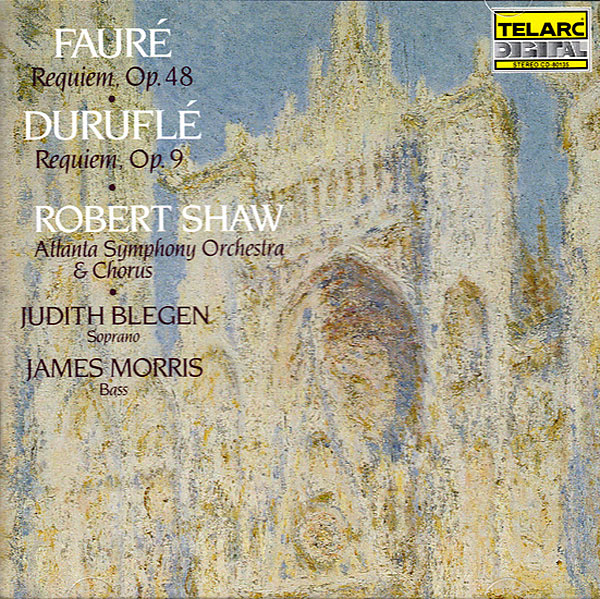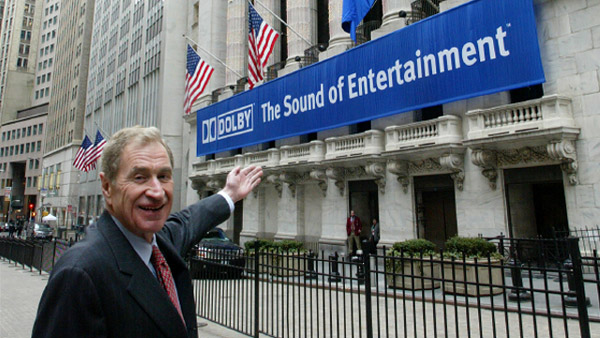LATEST ADDITIONS
Bel Canto Design Aida D/A processor
Recording of October 1987: Duruflé & Fauré Requiems
Blegen, Morris, Shaw, Atlanta SO and Chorus.
Telarc 80135 (CD). Robert Woods, prod.; Jack Renner, eng. DDD. TT: 74:23
To have two Requiems by French composers on the same disc certainly invites comparisons. Superficially similar, the works are actually quite different: both are conceived for small-scale performance, both rely on the organ, and neither places any great demands on chorus or orchestra. The differences concern mood and even intent. Fauré's Requiem, composed between 1887 and 1890, has survived all kinds of performances, both amateur and professional, without losing its ability to move hearers with its gentle hymn for the dead. The Duruflé, composed in 1947, has not achieved this kind of public appeal. A commissioned work, and not unified in style, this requiem is enjoyed by those who sing it; audiences tend to find it bland.
Surpassing Expectations: Pioneer's Andrew Jones
While preparing the review, I took the opportunity to ask Andrew Jones, Pioneer’s chief engineer, a few questions about hi-fi, music, and loudspeaker design. As always, Jones was forthright and charming; his answers to my questions were often enlightening.
Listening #129
Music in the Round #62
The Entry Level #33
Recording of June 1983: Magnum Opus
 JAMES WELCH: Magnum Opus
JAMES WELCH: Magnum OpusJames Welch, Organist, and D.A. Flentrop, Organ-builder.
Wilson Audio W8111 (LP). David Wilson, eng.
Hearing this organ gives one delusions of grandeur! How wonderful to be rich as Croesus and be able to commission an organ like this for one's (baronial) home. At any rate, those of us who don't live in Seattle can hear it at home, thanks to this superb recording.
True to its title, this is as much a recording of the organ as it is of the organist. Full specifications are given on the back, and although it is not Flentrop's largest organ in terms of number of ranks of pipes, it is physically the largest: it contains a 32-foot Pedal Prestant which emits a floor-shuddering 16Hz!
Video: Juliana Barwick's "The Harbinger"
Curiously, the album version always—always—reminds me of the opening chorus to The Rolling Stones’ 1969 hit, “You Can’t Always Get What You Want.” Here, though, whatever hint of triumphant rock’n’roll that may exist in “The Harbinger” is replaced by the impressionistic strokes of cold, windblown colors and sheer textures. We hear the crunch of gravel beneath footsteps, the lapping of waves, sniffles, the chimes of an iPhone—all of these elements are captured, looped, and folded into the piece.
Ray Dolby, 1933–2013
We are saddened to learn of the passing of inventor and audio entrepreneur Ray Dolby. Other sites have published full obituaries; I'd like simply to offer my memory of interviewing Ray back in the spring of 1977 for the English magazine Hi-Fi News, when Dolby Laboratories were trying to get the BBC interested in using Dolby noise reduction in FM broadcasting. Despite my being a neophyte audio writer, I was treated with courtesy and respect by a man who had forgotten more about audio engineering than I knew.









